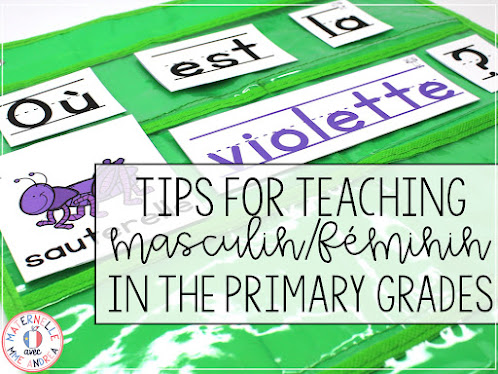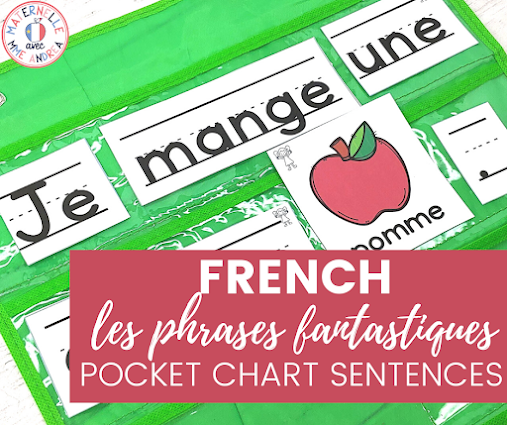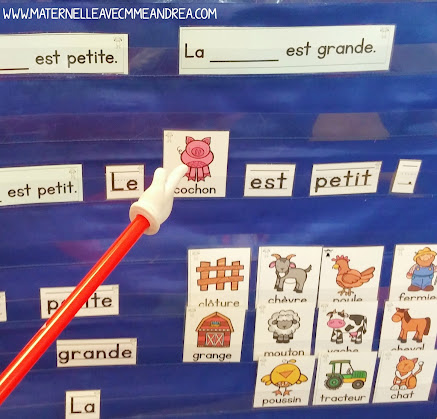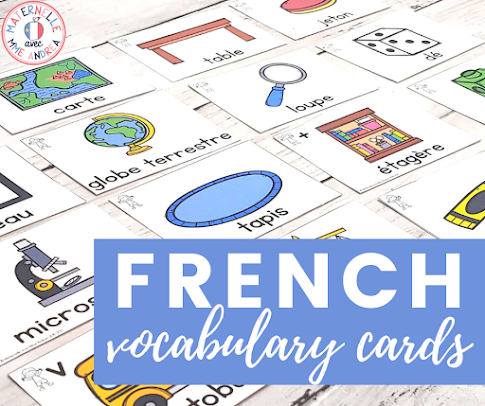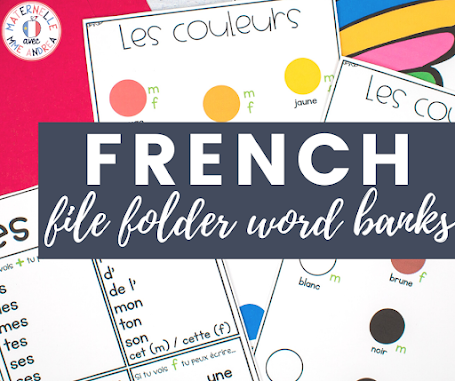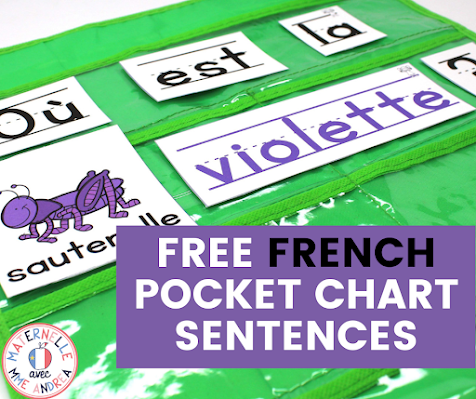One struggle I had when I first started teaching writing was how my students had a REALLY tough time with articles in their stories.
They would often write sentences like, “J’aime ma une maman.” when I had word wall cards that included the article… but I didn’t think I could take the article off the word wall cards, because then how would they ever know the « genre » of the word?
This was also a really hard concept to teach to native English speakers who don’t learn to talk with this whole masculin/féminin thing being a thing.
Over the years, I worked hard to find a way to expose my students to the fact that articles work differently en français, as well as helping them begin to be aware that they needed to pay attention to them.
Obviously, at this age they will never be perfect, but there ARE some things I’ve discovered over the years that you can do to help your students practice and become more aware of this. Here are some of my faves!
Les Phrases Fantastiques
I introduce the whole concept of articles, year after year, using one of my most popular resources – Les Phrases fantastiques.
If you’re not familiar with this resource, Phrases fantastiques are pocket chart predictable sentences, where students use sight words and vocabulary words to build a sentence that makes sense.
When creating this product, I quickly realized I would need to provide students with a clue so that they would know if they needed to use le/la/une/un, etc. Otherwise, they would just be pulling articles without any thought at all about if they made sense.
I decided to add a symbol to each card (to show if the word is masculin/féminin/starts with a vowel/is plural), and teach my students how to match them up to build sentences that make sense and are grammatically correct.
I used a boy/girl image instead of the letters m/f because there were already so many letters in each sentence, and letters are new to our students (I realize now that it’s not accurate or inclusive to say “a girl looks like this/a boy looks like this”, and I am open to other suggestions for symbols if you have any ideas!).
Each day when we do our sentences, I guide my students to remember to check the symbol and choose an article that makes sense.
Are they perfect? No!
Are they starting to realize that this is a thing and you can’t just pick the article you want out of thin air? Yes!
I have noticed big improvements since creating this resource.
A Classroom Référentiel
Once my students are more familiar with/have seen some articles for each « genre », we co-create a poster to display in the classroom.
We brainstorm articles we can use – ones we have seen with our Phrases fantastiques, ones in our levelled readers, etc. We sort them in a T table with masculin/féminin/pluriel.
(You could also add “starts with a vowel” but I find those three enough for now! In older grades, that might be something you’ll want to include.)
This poster is displayed in my classroom and students can refer to it as needed. They use it especially when using our thematic vocabulary cards and/or word banks during writing, which I’ll talk about next.
Other Resources I Love
Two other resources I love to use to support this learning are my Vocabulary Cards and my File Folder Word Banks.
Vocabulary Cards:
Available on TPT for tons of themes, I place the cards on binder rings and display this on hooks for students to use whenever they want.
The symbols on these cards match the symbols in the Phrases fantastiques resource.
Banques de mots:
Created using file folders, these word banks stay in a bin in my classroom for students to use during writing to help support their writing. I LOVE these – students can so easily find the word they need without flipping through a bunch of cards.
This product does have m/f as the symbols as I am testing transitioning out of the girl/boy images. There is also a référentiel on the back of each word bank showing correct articles for each type of word.
Want to Try it Out?
You can try a FREE set of Phrases fantastiques for colours & animals by entering your name & email at THIS LINK.
I’ll send it straight to your inbox!
This set is a really good resource for this concept because the colours also need to accord, as well as the sight words.
(Note that the sentence you will receive is not exactly the same as the one pictured – it’s a sample part of the resource pictured, but an easier sentence 😊)
Do you have any other tips for practicing masculin/féminin?
Comment below and let me know!


